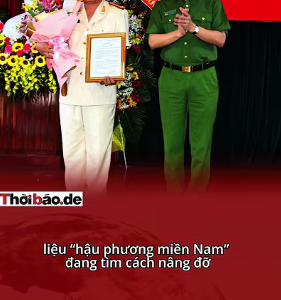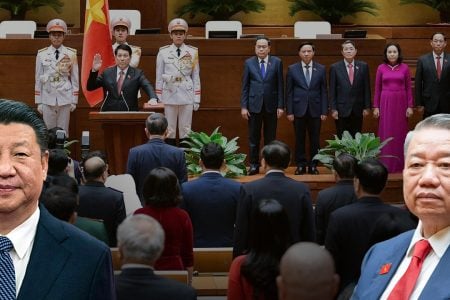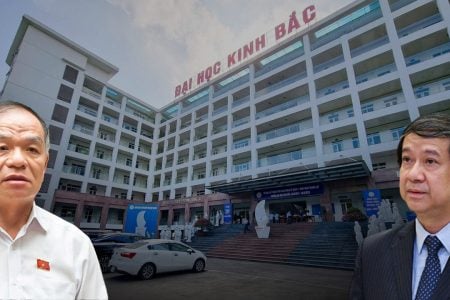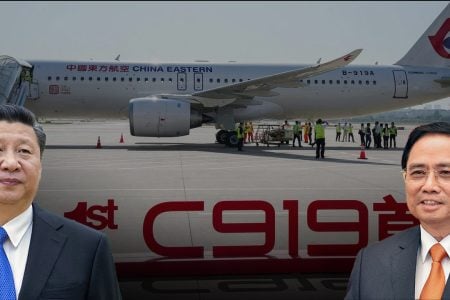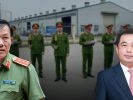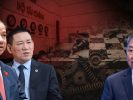
Finally, Vietnam showed off its ballistic missiles with a range of 600 km to the world to deter China when Beijing intends to take nearly the entire East Sea (South China Sea).
It was the first public launch of the Scud ballistic missile system considered to be the only and most powerful in Southeast Asia, according to domestic media.
Vietnam’s Scud tactical ballistic missile system was launched at the 75th anniversary of the Vietnam People’s Army’s founding and the 30th anniversary of the All-National Defense Day in Hanoi.
VietNamNet’s news bulletin on January 6 said that although it has been in service for a long time, this is the first time the Scud ballistic missile system was publicly launched in Vietnam on December 23.
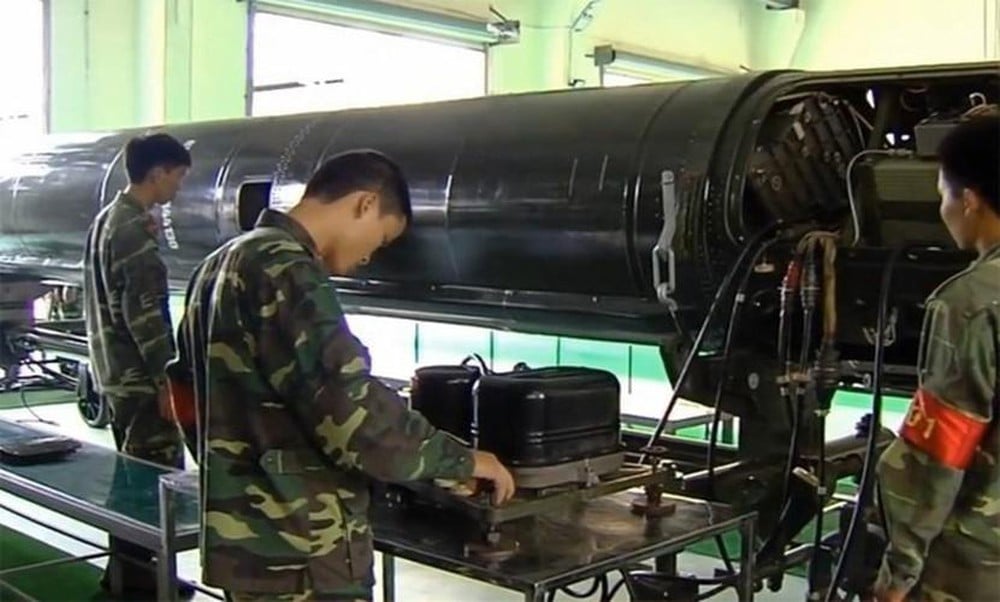
The Scud tactical ballistic missiles were originally developed by the Soviet Union during the Cold War, according to The National Interest. After six decades, versions of Scud have been replicated worldwide, present in ballistic missiles from North Korea to Iran.
According to Stockhom Institute for Peace and International Studies, Vietnam received several mobile launchers and dozens of Scud-B shells in 1981. Scud was exported to many allied countries by the Soviet Union worldwide.
The original missile was called R-11 (with the first version) and R-17 (later changed to R-300) Elbrus (later version). But the whole world is still used to calling it the Scud name NATO gave it.
Also according to the Stockhom Research Institute, in 1998 Vietnam purchased from North Korea dozens of short-range ballistic missiles Hwasong-6 (Mars 6), a replica based on the Scud-C prototype, with a range of shoot up to 600km.
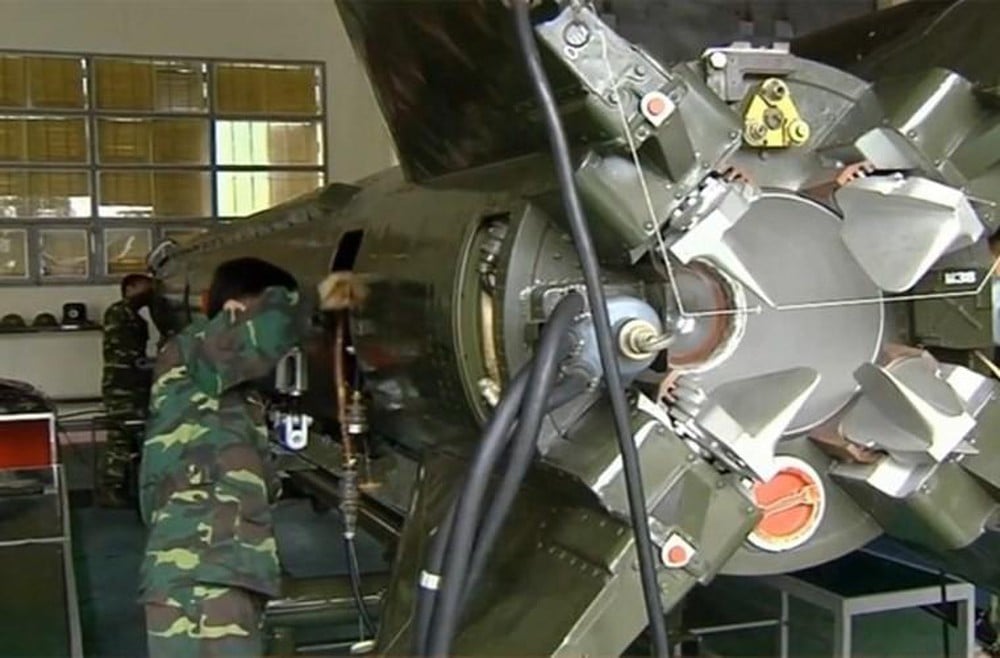
No other ballistic missile appeared more frequently in the conflicts of the 20th and 21st centuries, like the Soviet R-17. Known to the world as Scud, it has been copied and modernized a lot compared to the original version. About 3,000 of these short-range missiles have been fired in conflicts around the world in the second half of last century.
With its simplicity, high reliability and low cost, the R-17 has appeared in the arsenals of more than 30 countries and has been built everywhere under Russian license or simply copied. The R-17 was tested in 1957 after two years of development to replace the first-generation Soviet R-11 tactical nuclear missile.
These missiles are derived from the V2 rocket manufactured by Nazi Germany – the first ballistic missile in the world with more than 1,300 shells fired at London during World War II.
Improved fuel use allows Scud to last for more than 20 years without high-tech maintenance. This, along with a number of other improvements, allowed Scud to have a maximum range of 300km in the first variant.
This missile can carry either a conventional warhead or a nuclear warhead and can destroy a target within a diameter of 600m.
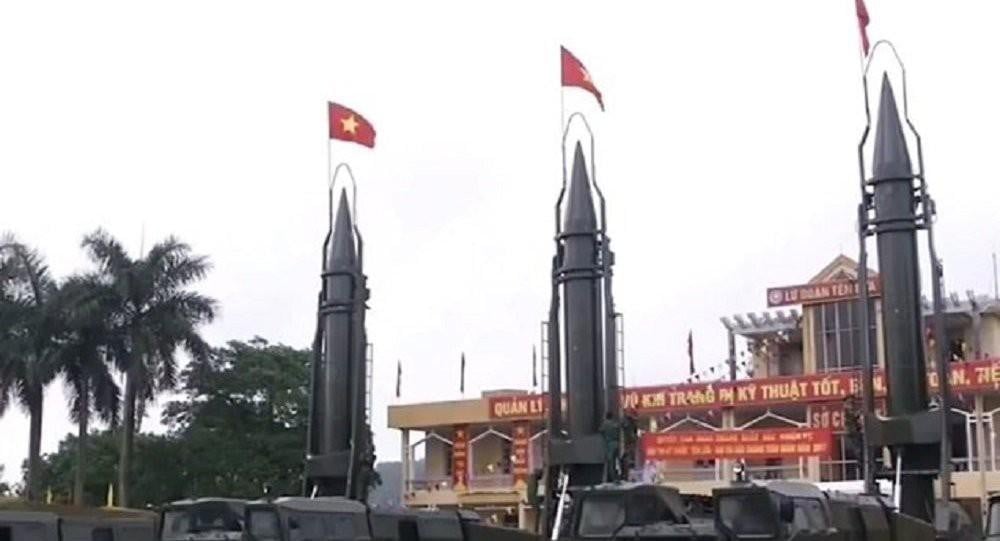
Its nuclear warhead variant is a key weapon of the Soviet Missile Forces while conventional missiles are exported. From the 1960s and 1980s, the Scud was delivered or aid to a series of international partners of the Soviet Union. About 1,000 of these missiles have been sold to countries like Egypt, Iraq, North Korea, Cuba, Libya and Syria. Many of these were produced by importing countries on the basis of Soviet licenses or were simply copied.
During the war in Afghanistan (1979-1989), the Soviet Union also used Scud (R-17) missiles against Iranian and Pakistanian Islamic jihadist forces which sheltered in deep positions in mountain and well shielded.
In the „Cities War“ during the Iran-Iraq conflict (1980-1988), both sides used Scud missiles against each other, firing a total of about 600 missiles. By the end of the war, Iran’s infrastructure and towns in Khuzestan Province were almost completely destroyed. Iraq was also seriously destroyed, including the capital Baghdad.
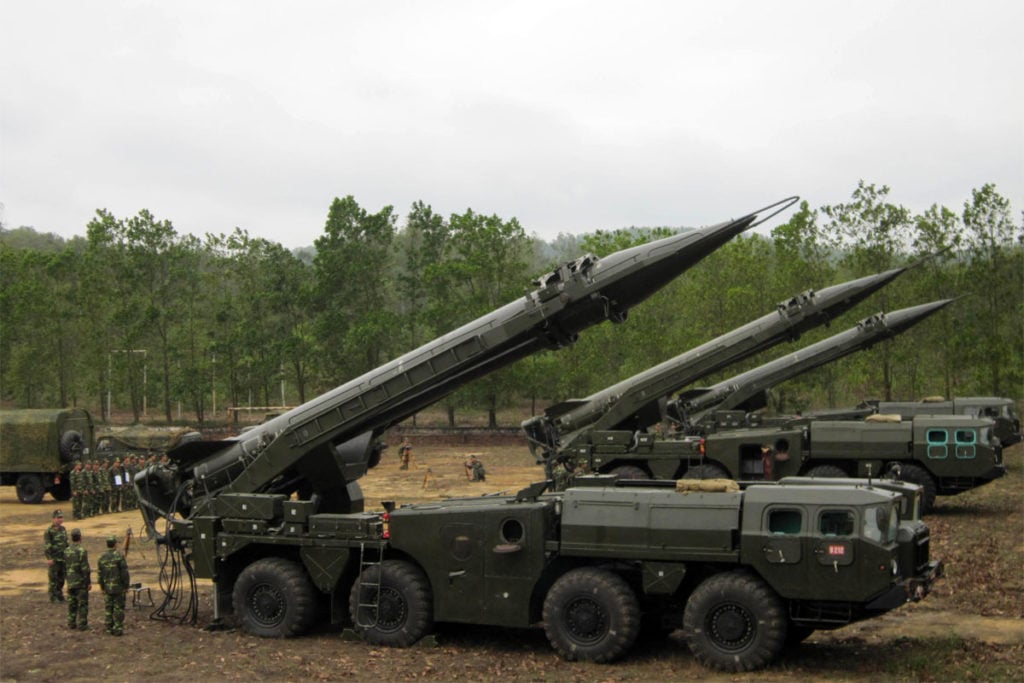
R-17 missiles were also used extensively during the First Gulf War (1991). Iraq fired 40 rounds at Israeli territory and 46 at Saudi Arabia. Fortunately, they only fall into sparsely populated areas so the damage to people was negligible. In Israel, only 2 people died and 11 were injured. But a Scud rocket landed in a US military barracks in the Saudi city of Dhahran, killing at least 26 US soldiers and injuring 100 others. It was the largest loss of coalition forces in a single day during the “Desert Storm” campaign.
In March last year, the Stockhom Research Institute released a report on international arms deals, which said Vietnam was among the top 10 countries buying military equipment in the world.
In recent years, more than 80% of Vietnamese military orders have been implemented by Russia. Vietnam uses its expenses to modernize its capabilities – especially submarines and battleships.
Since President Barack Obama lifted the embargo on the sale of lethal weapons to Vietnam, Hanoi had contracts to buy military equipment worth $94.7 million from the US, according to a source of the State Department.
In 2018, Vietnam’s Foreign Ministry spokeswoman Le Thi Thu Hang said that “Vietnam’s defense policy is to protect the independence, sovereignty, unity, territorial integrity of the country and peace of the country and contribute to peace and stability in the region and the world.”
Scuds of B and C versions are considered as one of the powerful weapons of Vietnam’s artillery force today. According to the An Ninh Thu Do newspaper, Vietnam is the first and only the military force in Southeast Asia to have a Scud tactical ballistic missile on the payroll.
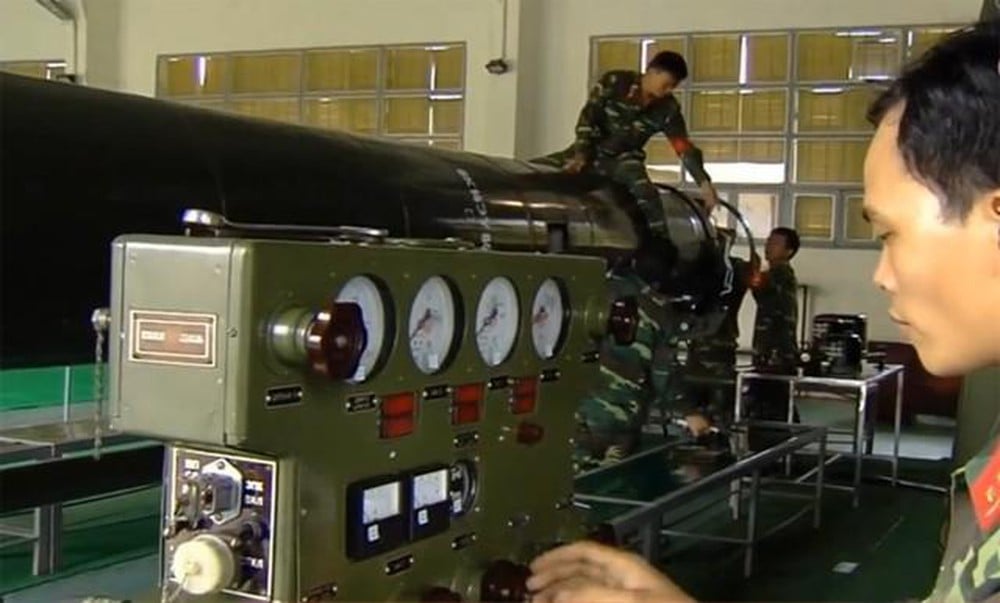
Also in December, Vietnam first launched the SPYDER air defense missile system, which the domestic press called the “killer” purchased from Israel. In recent years, domestic and international media have reported that Vietnam possesses modern SPYDER air defense missiles from Israel but there is no official image of the weapon.
Vietnam over the past decade has sharply increased defense spending to modernize its military amid China’s relentless expansion of its power in the region. SIPRI data shows that Vietnam’s defense spending increased from $1.3 billion in 2006 to $5.5 billion in 2018, with an increase of more than 320%.
The Stockholm Research Institute in March 2019 released a report on international arms deals, which said that Vietnam was among the top 10 countries purchasing military equipment in the world.
According to the institute, between 2014 and 2018, Vietnam’s arms imports accounted for 2.9% of global sales, up 78% from 1.8% between 2009 and 2013.

Vietnam is the only Southeast Asian country in the top 10 in recent times.
Of the top 10 countries importing weapons in the world from 2014 to 2018, half are Asian and Oceania countries including India, Australia, China, South Korea and Vietnam. Russia exports 31% to this region. Next are the United States (27%) and China (9%).
In 2018, a US State Department official confirmed that Vietnam had contracts to buy military equipment with the US worth up to $94.7 million.
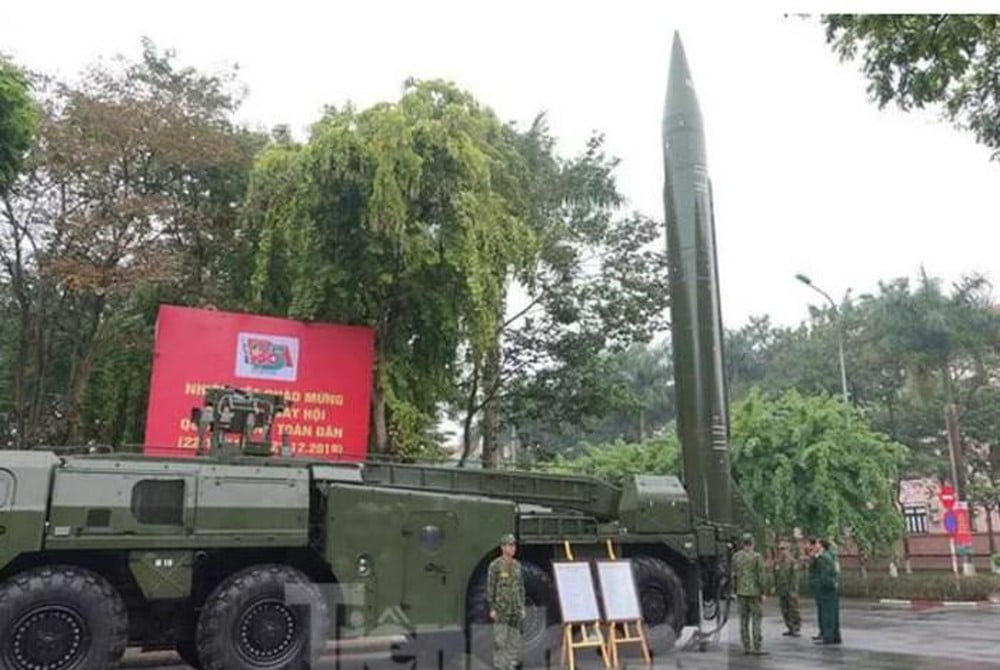
In addition to buying the military equipment, “the US Department of State also provided Vietnam with $12 million in Foreign Military Financial Supply (FMF) program in fiscal 2017,” the US official added.
Recently, China repeatedly deployed geological ships No. 8 and coastal police fleets in Vietnam’s economic zone, but the law enforcement and the People’s Army of Vietnam cannot take definitive measures to deal with China’s violations of the country’s sovereignty.

The Chinese government has also always issued international notices about its sovereignty of the 9-dotted line (which Vietnam calls the U-shaped line) which covers over 90% of the East Sea.
With this statement of China, almost the entire economic zone of Vietnam including the Hoang Sa (Paracels) and the Truong Sa (Spratlys) have become Chinese territory.
Therefore, in preparation for the worst-case scenario, Vietnam had to prepare and be forced to announce some of its new weapons with the aim of preventing aggression from China.
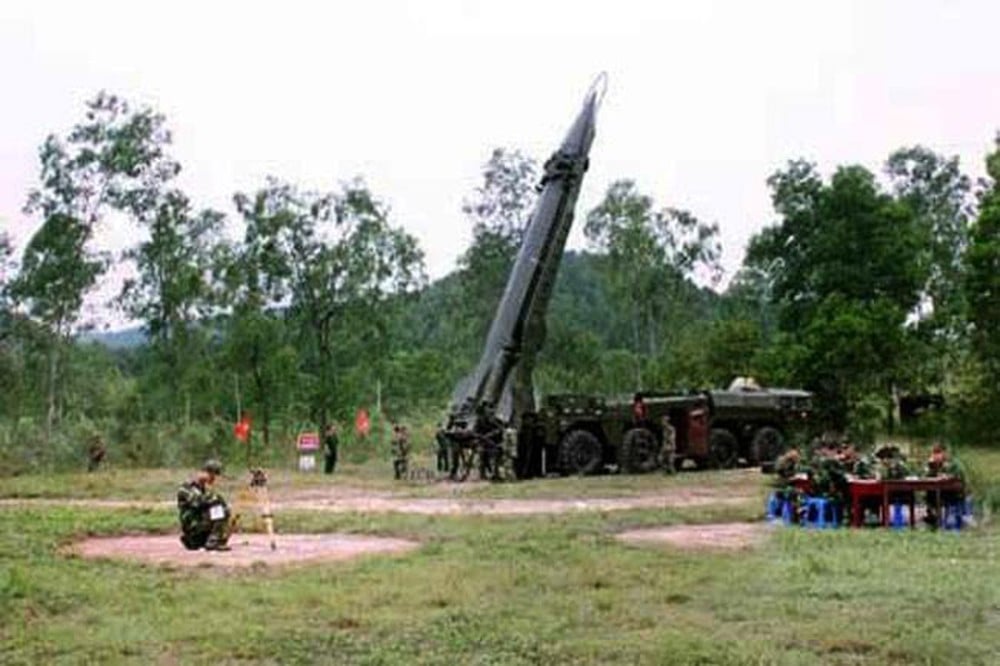
But in a longer strategy to protect nearly 100 million people and the sacred sovereignty of the Fatherland Vietnam cannot stand alone.
Buying Western weapons is necessary but becoming an ally with the US and the Democratic and Liberal countries will be even more necessary.
Hoàng Trung from Hochiminh city – Thoibao.de (translated)



